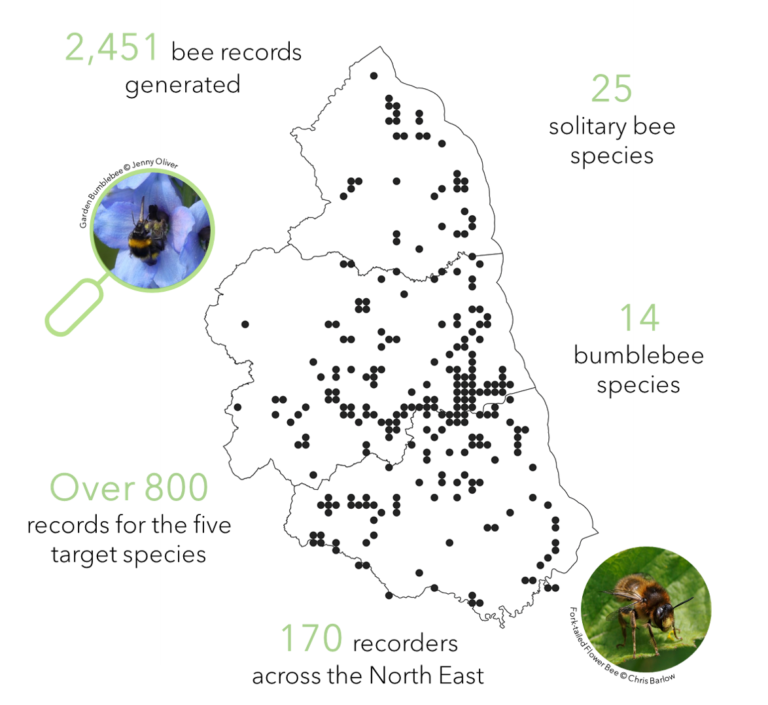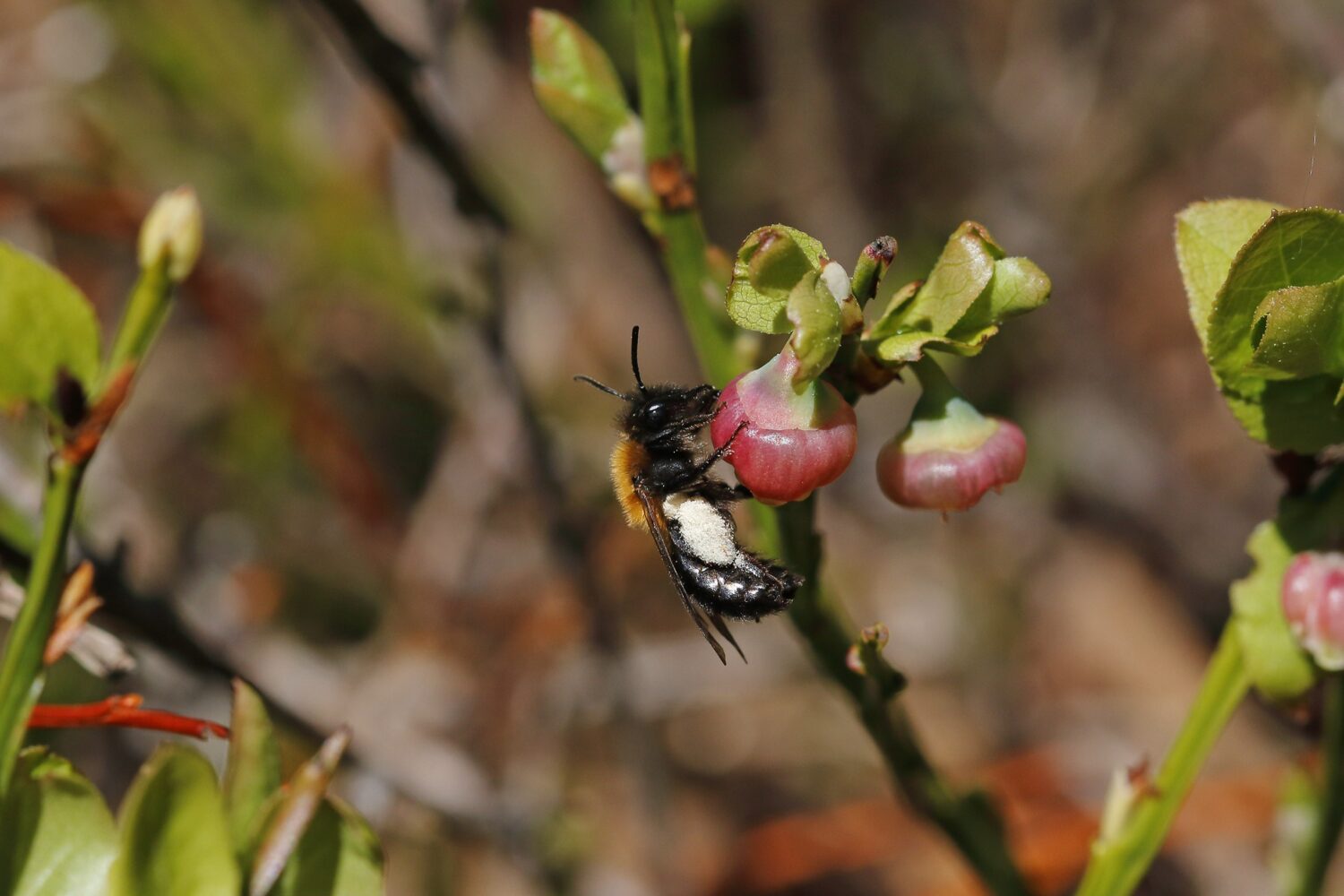This year, naturalists across the North East took part in the North East Bee Hunt. Mapping the region’s bees, your records have shed new light on bees in the region and will inform monitoring and conservation efforts.
Your impact
From March through to September, 2,451 bee records were generated by 170 naturalists across the region. These records stretched from Berwick-upon-Tweed to Middlesbrough, from the uplands to the coast, and reaffirmed the importance of gardens and local greenspace for bees.
Plugging gaps in our knowledge, over 800 records were received of all five target bee species. The Red-tailed Bumblebee (Bombus lapidarius), Tree Bumblebee (Bombus hypnorum) and Red Mason Bee (Osmia bicornis) were the most frequently observed target bee species.

Key results of the North East Bee Hunt 2020
Your records revealed the diversity of bees that can be found on the doorstep. Over the duration of the Bee Hunt, an additional 36 species were observed and recorded. From the tiny furrow bees to the burly bumblebees, bees from 14 different groups were observed. Both early-flying and later-flying bees were recorded, capturing 25 solitary bee species and 14 bumblebee species.
Your records also captured the changing activity of bees over the seasons. The Bee Hunt began with records of nest-searching queen bumblebees and spring-flying solitary bees. As time progressed, spring activity was succeeded by summer-flying species such as leafcutter bees. Numerous male bumblebees and new queens were also observed later in the year, both sure signs of successful nests.
You made notable discoveries
Your records were shared with the North East’s local environmental records centre, ERIC North East, and added to the regional species dataset. Collectively, 136 new squares for the target species were discovered, or discovered in squares last recorded prior to 1990 on the ERIC North East database.
You also observed bee species in the North East that are less well known, with few known sites or have specialist habitat requirements. Here are just some of the species highlights:
- The spring-flying Hairy-footed flower bee (Anthophora plumipes) was discovered in new areas beyond its known clustered distribution in Alnwick, North Northumberland.
- The Bilberry bumblebee (Bombus monticola) was observed both in Northumberland and the North Pennines. A Bilberry specialist mining bee (Andrena lapponica) was discovered in South Northumberland, potentially the first known record for this part of the region.
- The Harebell specialist Gold-tailed Melitta bee (Melitta haemorrhoidalis) was found in good numbers at its Tyne Riverside site, one of just two known sites for this species in the region.
Diversity of bees recorded during the Bee Hunt
How your records have made a difference
Through the collective effort of recording bees and putting bees on the map, we can build a great understanding of where bees are and how they are faring in the region. With this knowledge, we can protect and conserve them.
Bee Hunt records were submitted via iRecord. Once submitted to iRecord, bee records are checked by experts usually on the behalf of the Bees, Wasps and Ants Recording Society (BWARS). Nearly 70% of your records have been checked and accepted so far!
Records from the Bee Hunt can be accessed by those who need it to inform research and conservation efforts. This includes local environmental records centres, county recorders and recording schemes (such as BWARS). Your records also make an impact beyond the region, informing national efforts and feeding into a national dataset of bees. Many of your records have already made it onto the National Biodiversity Network (NBN) Atlas, the UK’s largest collection of biodiversity data.
You learnt about bees and recording
Throughout the duration of the Bee Hunt, a range of articles and videos were produced to support identification and recording. To share your Bee Hunt experience, a feedback survey was sent out in September 2020. Many of you felt that the Bee Hunt had increased your knowledge of bees. Many also gained confidence in bee identification and recording.
The survey also highlighted how we can further encourage and support wildlife recording in the North East, and shape the future of NHSN citizen science.
I really enjoyed the North East Bee Hunt as a way to find out more about bees and contribute my records to citizen science.
Participant Feedback Survey (September 2020)
The North East Bee Hunt will return in 2021 and you can make an even bigger difference for bees by taking part again next year.

Take part next year
Returning in 2021, you can make an even bigger difference for bees by taking part in the North East Bee Hunt next year.
You can explore this year’s records on iRecord and discover more about the results by watching a special Friday Talk.
A detailed Bee Hunt summary report is also featured in this winter’s Northumbrian Naturalist.